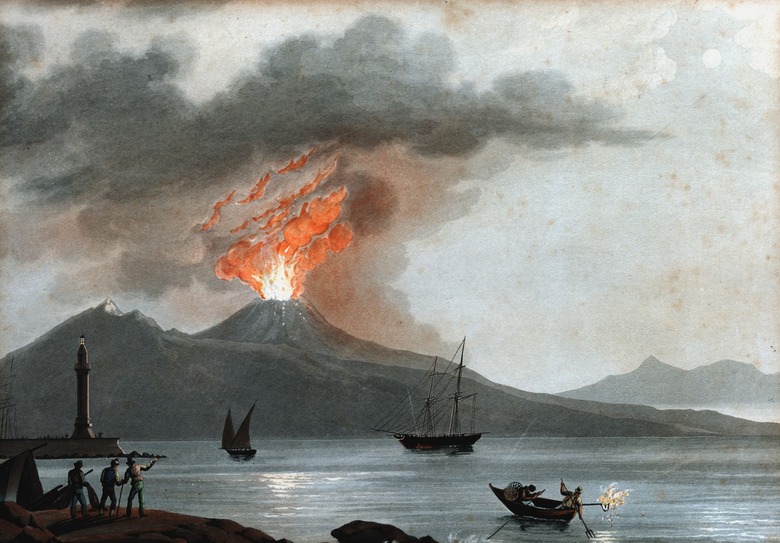Similarities Between The Different Types Of Volcanoes
Some volcanoes have steep, conical sides while others are dome-like, spreading farther in width than height. Violent eruptions contain great amounts of ash and debris; slow eruptions consist primarily of lava. Regardless of differences in shape and behavior, all volcanoes have similar causes and present the same basic hazards.
Three Main Volcano Types
Three Main Volcano Types
Cinder cones, the simplest volcano types, measure less than 300 meters high and erupt explosively. Blobs of congealed lava build and eject from a single vent before breaking into solidified cinders.
Shield volcanoes erupt quietly. Fluid basalt lava pours out in all directions from a group of vents, building a broad dome extending over distances as far as 4 miles.
Explosive stratovolcanoes, or composite volcanoes, have steep, symmetrical, conical shapes built up over time by alternating layers of lava flows, volcanic ash, cinders and other volcanic particles. A central vent or cluster of vents is at the summit.
The Three Volcanic States
The Three Volcanic States
Volcanoes exist in three separate states.
Active volcanoes can erupt often, at any time. Active cinder cone volcanoes present the greatest threat because they explode upon eruption. Stratovolcanoes alternate unpredictably between violent eruptions and slow-moving eruptions. All active volcanoes present a danger to those living within range.
Dormant volcanoes, in theory, can erupt at any time but have not done so in modern history.
Extinct volcanoes have had no eruptions in such a long time that scientists conclude they will not erupt again.
Eruptions
Eruptions
Each type of volcano erupts as a result of the same basic process. Plates—slabs of Earth's crust, pieced together—move around and slide against one another. Magma, made of molten rock and gases, exists between Earth's crust and mantle. When two plates collide severely, so that one section slides on top while the other pushes downward, magma squeezes up between the plates, causing a volcanic eruption. These eruptions generally occur in the same locations because they involve the same plates. Volcanoes evolve when molten lava—magma above ground—cools, forming the basic volcano types.
Volcanic Hazards
Volcanic Hazards
All erupting volcanoes release gases, tephra (material fragments) and heat. Methane and other harmful gases may extend up to 10 kilometers from the volcano and create acid rain, burned vegetation and contaminated water; they may cause eye irritation. Tephra—rock fragments, ash and similar materials—can injure people nearby, when shot violently. Electrically charged fragments can cause lightning, start fires, disrupt airwaves and damage manmade structures. Lava flows from stratovolcanoes and shield volcanoes typically damage property. Volcanic eruptions, especially from violent cones or stratovolcanoes, can create damaging debris avalanches, landslides, tsunamis and earthquakes.
Cite This Article
MLA
Lowe, Caitlynn. "Similarities Between The Different Types Of Volcanoes" sciencing.com, https://www.sciencing.com/similarities-between-different-types-volcanoes-10018991/. 24 April 2017.
APA
Lowe, Caitlynn. (2017, April 24). Similarities Between The Different Types Of Volcanoes. sciencing.com. Retrieved from https://www.sciencing.com/similarities-between-different-types-volcanoes-10018991/
Chicago
Lowe, Caitlynn. Similarities Between The Different Types Of Volcanoes last modified March 24, 2022. https://www.sciencing.com/similarities-between-different-types-volcanoes-10018991/
